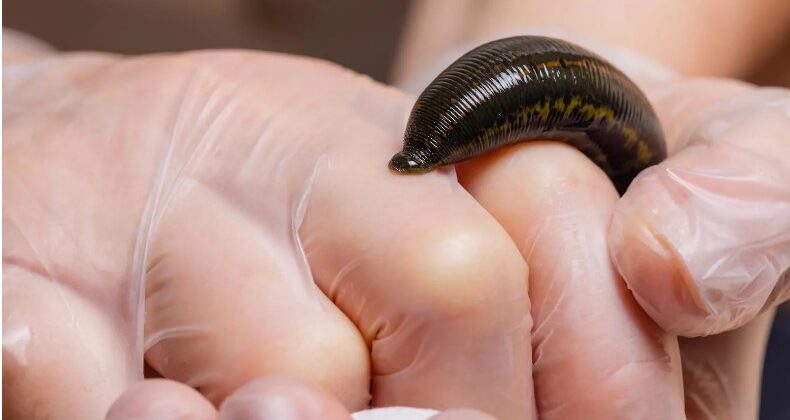Effective DVT Management with Leech Therapy: What You Need to Know
How To Deal With DVT Using Leech Therapy: What You Need to Know
A disease known as deep vein thrombosis (DVT) occurs when a blood clot forms in a deep vein (typically a leg vein). This clot can be painful, swollen, and, more severe, may result in PE, a condition in which the clot invades the lungs. Traditional DVT treatments involve blood thinners, compression stockings, and even surgery. But one therapy that has gained some popularity in recent years is leech therapy.
Medical leeches, known as hirudotherapy, are used to cure a number of illnesses. Though most often used for blood flow and inflammation management, leech therapy is also being considered as an adjunct to DVT management. Learn how leech therapy can be useful in treating DVT and why you may want to add it to your treatment arsenal.
How Leech Therapy Improves DVT?
Leech therapy has been hailed as a way to control blood flow and mitigate the risk of DVT. How Leech therapy can help to treat DVT:
Anticoagulant Properties
Medical leeches release hirudin, a potent natural anticoagulant. It both helps to ward off new clots and may also dissolve existing ones, making it a useful adjunct to DVT treatment.
Improved Circulation
A significant concern in DVT is the lack of circulation around the site. By circulating the blood and clearing venous congestion, leech therapy can boost circulation. It increases circulation that in turn decreases swelling and repairs damaged tissues.
Reduction of Inflammation
DVT often causes swelling and pain in the leg. The chemical present in the leech saliva acts as an anti-inflammatory, reducing swelling and pain in the area, giving much-needed relief.
Pain Relief
The natural anti-inflammatory effects of leech saliva reduce the pain associated with DVT. Its saliva also contains analgesics, which can soothe the site and ease pain so that it can heal more easily.
Prevention of Complications
By increasing blood circulation and reducing clotting, leech therapy can reduce the likelihood of complications from DVT, including pulmonary embolism, when a clot escapes and makes its way to the lungs.
What To Expect From A Leech Therapy Sessions for DVT.
Leech treatment for DVT is often administered clinically, under the guidance of a physician. Here’s what happens during a session:
Treatment with Medical Leeches: The physician will insert medicinal leeches into the injured region. These leeches will latch on to the skin and begin to consume the blood, releasing healing compounds into surrounding tissue.
Time : Leech therapy sessions usually last between 30 to 60 minutes depending on the severity of the illness and the amount of leeches used.
Treatment Follow-up: Upon completion of the session, the leeches are carefully removed and the space cleaned and monitored. The doctor may prescribe additional medication or check-ups depending on the condition.
Leech Therapy to Treat DVT: The Advantages of Leech Therapy
Increased Circulation: By increasing blood flow and clearing venous congestion, leech therapy can help speed the healing process and diminish swelling on the injured limb.
Pain & Inflammation Relief: Leech therapy naturally alleviates the pain and inflammation associated with DVT.
Better Complications Risk: By reducing the formation of clots and improving circulation, leech therapy reduces the risks of complications such as pulmonary embolism.
– Naturopathic Treatment: Leech therapy offers an effective, non-invasive alternative treatment for DVT for patients seeking alternative or complementary treatments.
Answers To Frequently Asked Questions About Leech Therapy For DVT
1. Do you recommend leech therapy for treating DVT?
And, yes, leech therapy is relatively safe under the care of a professional and in a sterile setting. Your healthcare provider should make sure that you’re suited for leech therapy.
2. : How long does DVT leech therapy last?
Treatments typically last 30 to 60 minutes, depending on the condition and the number of leeches.
3. Does leech therapy hurt?
Leech therapy is generally painless. The leech bite is usually harmless due to the numbing effects of its saliva. The vast majority of patients experience minimal to no pain during the procedure.
4. How many sessions of leech therapy are required for DVT?
Depending on the severity of the DVT and the body response to treatment, the number of sessions will vary. Some patients may require multiple sessions over a longer period of time.
5. Is leech therapy a safe alternative to DVT?
Leech therapy typically operates as an adjunct to standard treatments, including blood thinners and compression stockings. It shouldn’t replace conventional medical therapies, but it might make them work better.
6. Is leech therapy associated with any side effects?
The simplest adverse reactions are mild swelling or redness at the bite site of the leech. In some cases, an infection can occur, but this can be reduced with aftercare.
Conclusion
Leech Therapy is an effective and all-natural way to treat DVT. It can support conventional remedies and yield greater benefits by increasing circulation, decreasing inflammation and reducing pain. If you have DVT, discuss leech therapy with your physician to determine whether it’s a helpful adjunct to your therapy.



